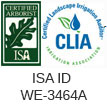Designing a functional, beautiful and environment friendly commercial landscape project is a complex process that often involves stressful deadlines and other pressures. Site planners must constantly assess the purpose of the project, available funds, and projected overall costs.
Specifics include getting a quick working knowledge of the natural elements of the site (climate, soil, slope, drainage and vegetation), and assessment of existing buildings, roads, walkways and utilities. These factors (and more) determine what improvements are necessary. Everything that is assessed and analyzed must be done so with the project’s impact on the local ecosystem in mind.
With industry trends leaning heavily toward green building and water conservation, designing a landscape plan with equipment and systems that you’re confident in will go a long way accomplishing three huge things:
- Keeping the project on budget
- Preventing preventable errors
- Keeping the number of RFIs as low as possible
With each new job comes some inevitable uncertainty of what equipment and systems to “spec.” It is one thing to have a firm grasp on the overall design, but it can be overly stressful to quickly, efficiently, and confidently decide on each individual “spec” particularly when it comes to complex, expensive equipment like fertilizer injection systems and pump stations for example.
This white paper will quickly give guidance and resources you can implement into your next design.
Specifying a particular “brand” of fertilizer injection unit into your plans saves tons of time, headaches and RFIs once the project is underway. Knowing which fertilizer injection unit(s) to spec into which project starts with forming a relationship with the right vendor. Someone with a broad local knowledge base, who has access to the best equipment, and who realizes that one size does NOT fit all. Working with the right vendor can actually help prevent most preventable errors – clearing the way for the project to go as smoothly as humanly possible.









 For a quote or consultation, call Jim Rosaschi at 702-361-3322 (office) or 702-400-4616 mobile)
For a quote or consultation, call Jim Rosaschi at 702-361-3322 (office) or 702-400-4616 mobile)